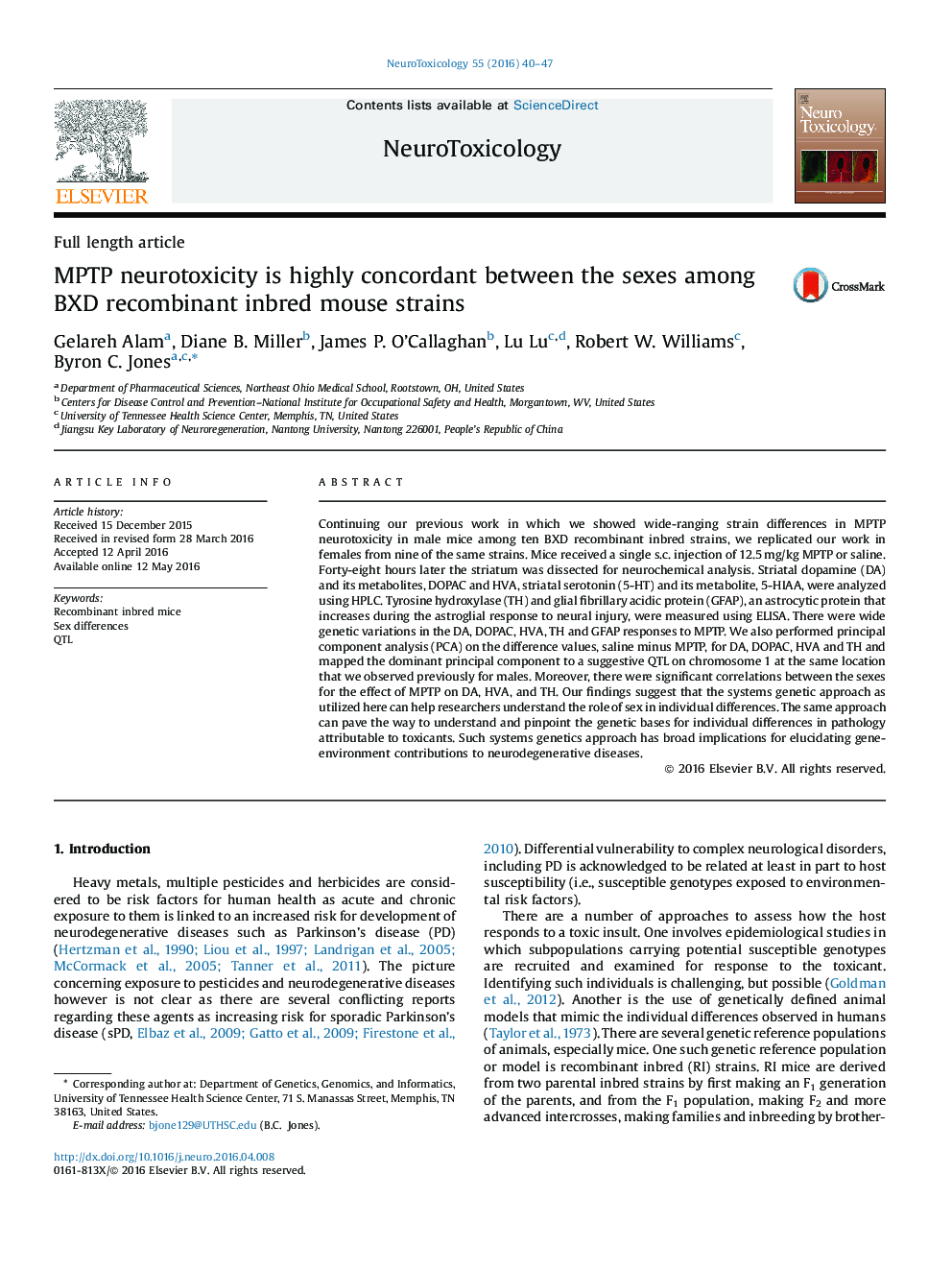| Article ID | Journal | Published Year | Pages | File Type |
|---|---|---|---|---|
| 2589441 | NeuroToxicology | 2016 | 8 Pages |
•Male and female mice show similar extent of damage to striatal dopamine system.•Differences between the sexes are seen in the production of GFAP.•Male and female striatal damage maps to the same location on chromosome 1.
Continuing our previous work in which we showed wide-ranging strain differences in MPTP neurotoxicity in male mice among ten BXD recombinant inbred strains, we replicated our work in females from nine of the same strains. Mice received a single s.c. injection of 12.5 mg/kg MPTP or saline. Forty-eight hours later the striatum was dissected for neurochemical analysis. Striatal dopamine (DA) and its metabolites, DOPAC and HVA, striatal serotonin (5-HT) and its metabolite, 5-HIAA, were analyzed using HPLC. Tyrosine hydroxylase (TH) and glial fibrillary acidic protein (GFAP), an astrocytic protein that increases during the astroglial response to neural injury, were measured using ELISA. There were wide genetic variations in the DA, DOPAC, HVA, TH and GFAP responses to MPTP. We also performed principal component analysis (PCA) on the difference values, saline minus MPTP, for DA, DOPAC, HVA and TH and mapped the dominant principal component to a suggestive QTL on chromosome 1 at the same location that we observed previously for males. Moreover, there were significant correlations between the sexes for the effect of MPTP on DA, HVA, and TH. Our findings suggest that the systems genetic approach as utilized here can help researchers understand the role of sex in individual differences. The same approach can pave the way to understand and pinpoint the genetic bases for individual differences in pathology attributable to toxicants. Such systems genetics approach has broad implications for elucidating gene-environment contributions to neurodegenerative diseases.
